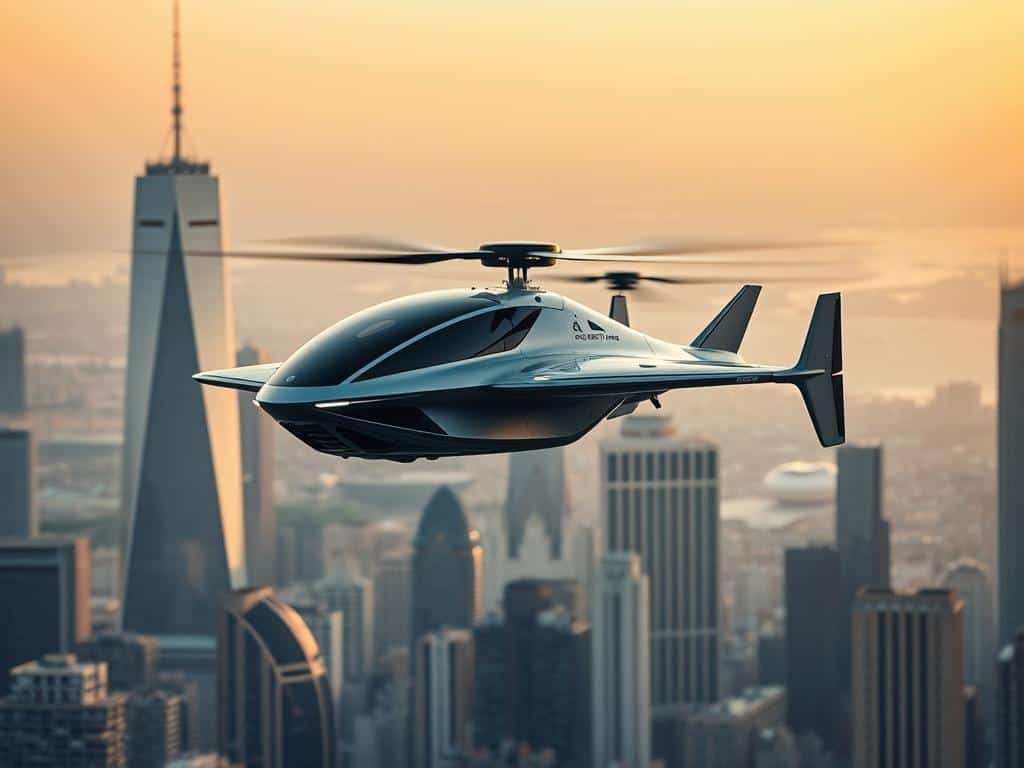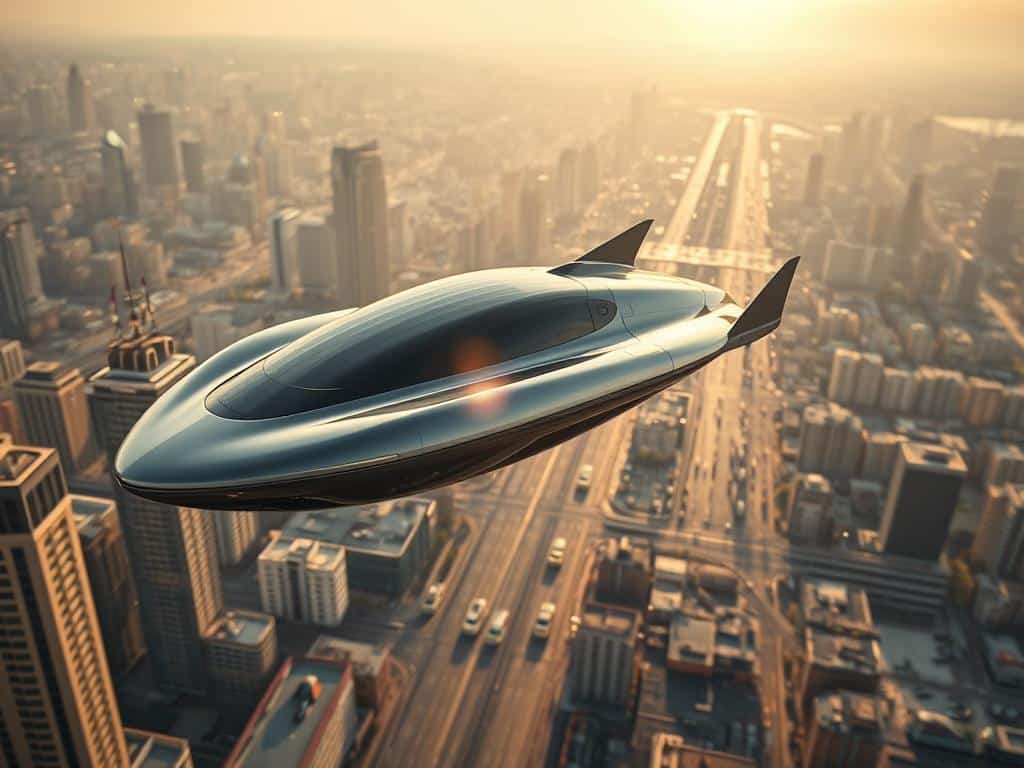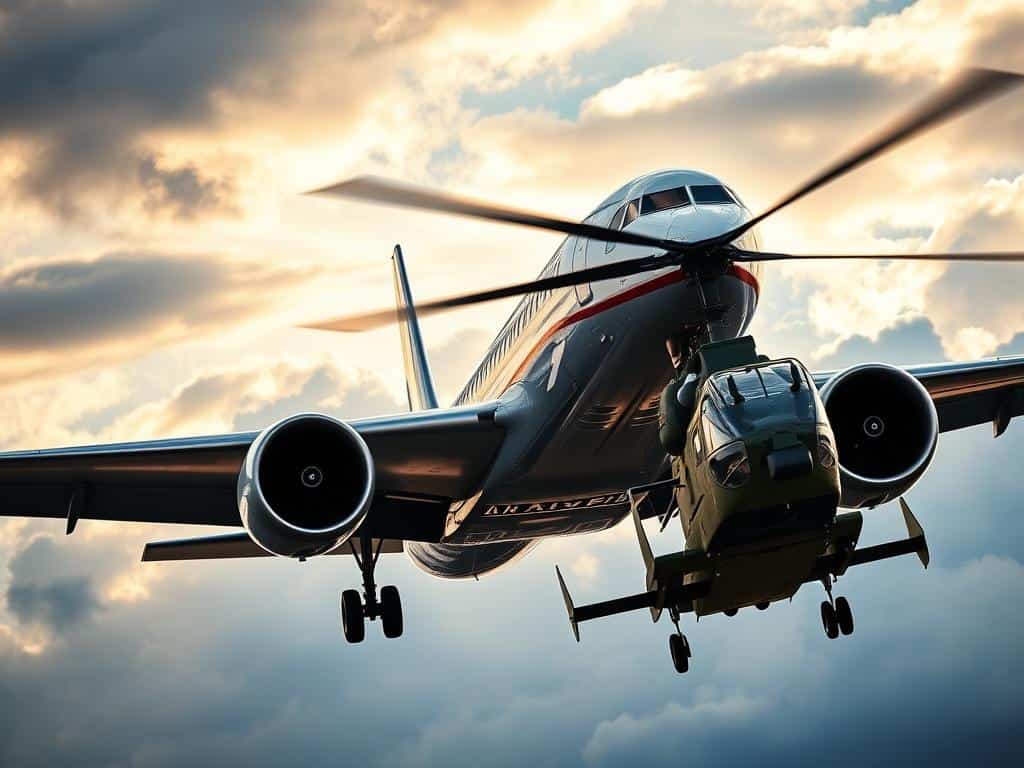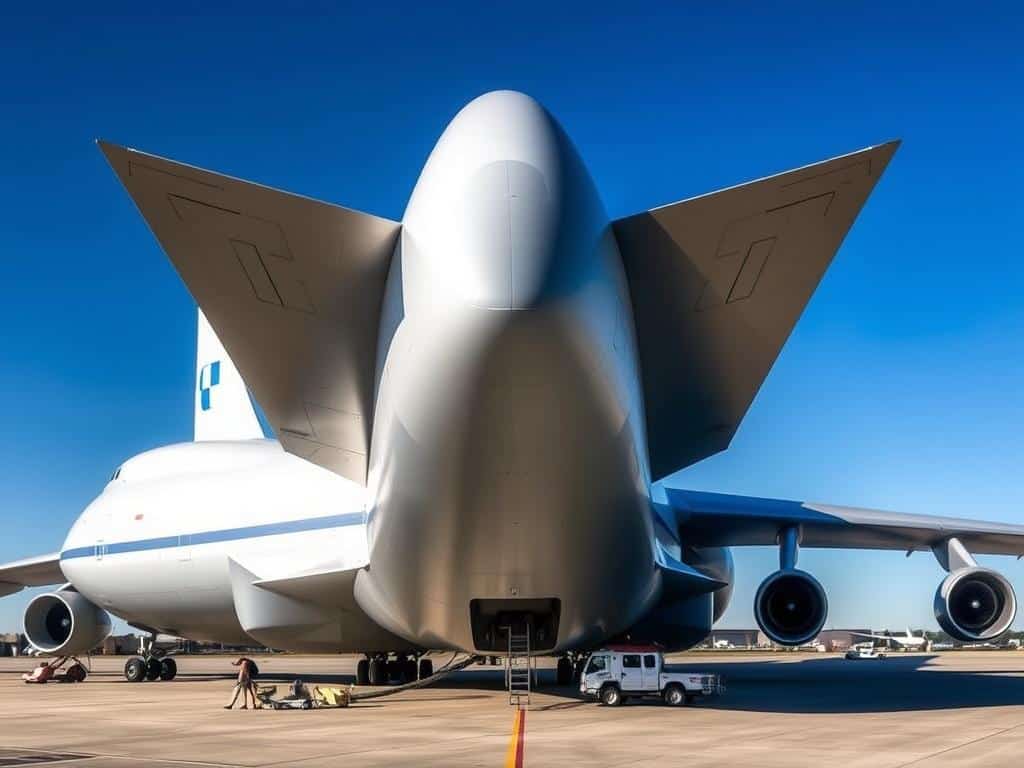As a kid, I used to look up at the sky, dreaming of flying cars. Now, that dream is getting closer. The future of travel is changing with electric vertical takeoff and landing (eVTOL) tech. Over 400 startups are working hard to make flying cars a reality.
In this article, we’ll look back at past attempts and see what’s happening now. We’ll also talk about the big challenges we face in this new era of travel.
Are we ready to take to the skies? Let’s explore how flying cars could change our lives.
Key Takeaways
- Flying cars are closer to reality with advancements in eVTOL technology.
- Over 400 startups are innovating in the advanced air mobility industry.
- The FAA aims to certify eVTOLs within the next two to three years.
- Public perception and regulatory concerns pose significant challenges.
- The 2028 Summer Olympics may feature air taxi services.
The Evolution of Flying Cars
The dream of flying cars has captivated innovators for over a century. This journey started long before the Wright Brothers’ historic flight in 1903. Early aviation inventions like autogyros and prototypes showed the promise of land and air travel together.
Historical Attempts and Early Innovations
In the history of flying cars, early attempts were key. In 1856, French aviator Jean-Marie Le Bris made a glider that flew nearly 300 feet. By 1910, Glenn Curtis created a flying boat prototype, helping the Navy’s first transatlantic flight in 1919.
In the 1930s, ideas began to take shape. Eugene Vidal launched a competition for personal aircraft in 1933. After World War II, Robert Fulton Jr. introduced the Airphibian, an aircraft car with detachable wings. Though approved, it didn’t catch on due to societal reasons.
Technological Advances Over the Decades
The 2010s saw a big leap in flying cars, thanks to new tech. The Terrafugia Transition, launched in 2009, was a major step. It could drive on roads and fly, fitting in a standard garage.
Today, eVTOL technology is changing flying cars. Companies like Joby Aviation and Wisk Aero are leading the way. They aim to make flying cars a part of daily life, promising to transform urban mobility.
Current Developments in Flying Cars
The rise of eVTOL technology is changing the game for flying cars. This tech lets electric aircraft take off and land vertically, just like regular cars. It makes flying around cities easier and more accessible. Experts predict the flying car market will hit about $1.5 billion by 2030.
Electric Vertical Takeoff and Landing (eVTOL) Technology
eVTOL aircraft are designed for city living. For example, Joby Aviation’s electric plane can carry four people up to 240 kilometers. These advancements aim to cut down on city traffic, possibly by up to 30% in big cities by 2035.
Key Players in the Flying Cars Market
Many companies are leading the flying car revolution. Xpeng plans to start making flying cars by 2026. Airbus and Terrafugia are also big players, showing a strong focus on changing how we travel. About 60% of flying car prototypes use eVTOL tech, showing a big shift towards eco-friendly transport.

Challenges Facing the Introduction of Flying Cars
Flying cars are an exciting idea, but they face many hurdles before they become common. Technology has improved, but rules and safety worries are big topics. These issues shape the future of flying cars.
Regulatory and Safety Concerns
Aviation rules are a big problem for flying cars. The FAA has given a Special Airworthiness Certificate to a flying car model. This shows progress, but current rules are made for traditional planes, not new tech like flying cars.
Adding flying cars to the skies will need careful planning and new safety rules. It’s a big job to make sure flying cars are safe in bad weather. Pilots will need special training and licenses, making things even more complicated.
The FAA is working on safety plans for flying cars. They want to make sure all risks are thought of and fixed. This will help make flying cars safe for everyone.
Public Perception and Market Acceptance
People are worried about flying cars because of safety. Old accidents have made some people scared of new ways to travel. Even though flying cars could make trips faster, many are unsure if they are safe.
Industry leaders need to teach people about the good things about flying cars. NASA and companies are working together to show how flying cars won’t be too loud. They also know flying cars won’t solve all traffic problems. They need to show how flying cars fit into our lives.
Conclusion
The journey to flying cars is exciting, showing how far we’ve come in transportation. With electric vertical takeoff and landing (eVTOL) tech, we’re on the edge of a big change. Companies like Alef Aeronautics are leading the way with models like the Alef Model A.
But, there are big challenges to overcome. We need new rules and for people to accept flying cars. We also need places to land and charge these vehicles.
If we move forward carefully, flying cars could change our lives. They could make our cities more connected than ever before. This could make flying cars a real part of our daily lives, changing how we see the world.



